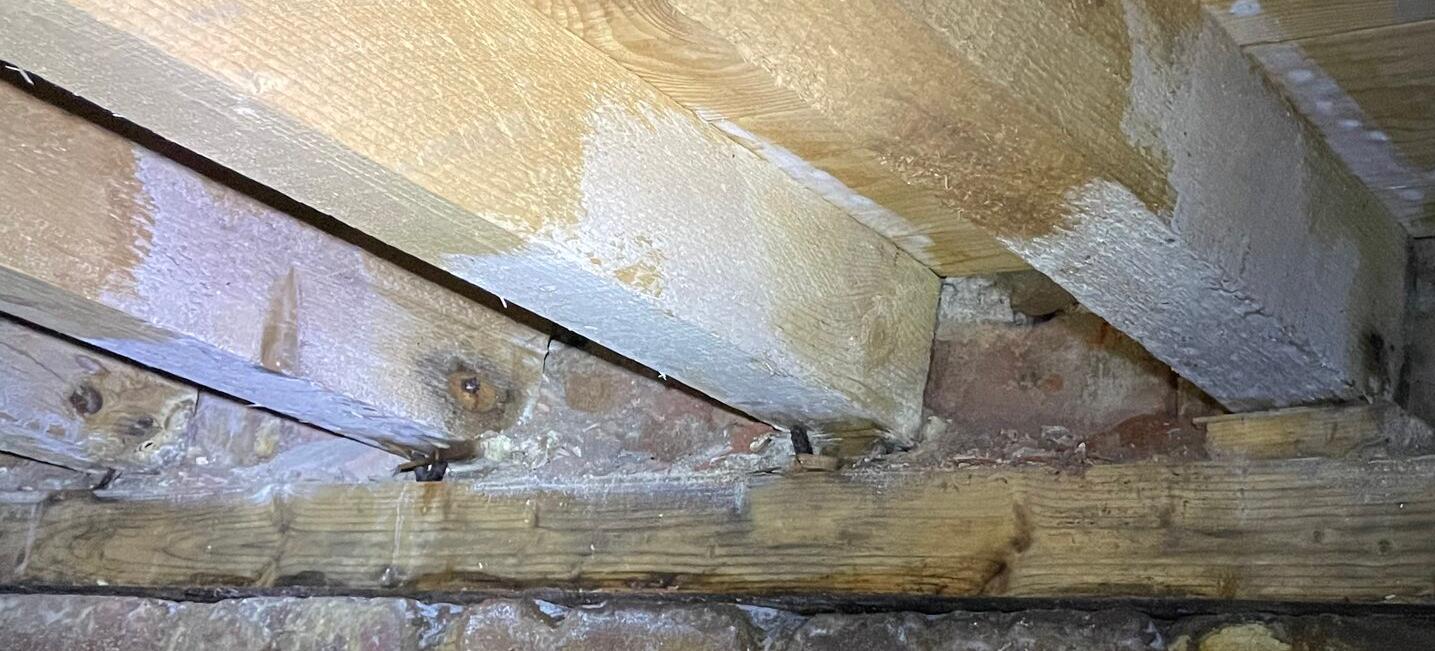- Joined
- 9 Mar 2021
- Messages
- 45
- Reaction score
- 0
- Country

What's wet and what's dry?
Remove the source of damp ingress - in every picture, it looks like the timbers are "soaking up" water from the brickwork. You want to wrap the ends in DPM wherever they're in contact with the brickwork. Looks like quite the undertaking, though. I think some of them might have been done already, can see a hint of some sheet material in there [not that it seems to have helped].
What's going on here with these newer timbers?
The white stuff looks painted on, rather than something that's grown. The ledger plate [?] looks to be damp on the underside, which means that it will eventually be completely damp.
I will check this and get back to you.
Do you think the timbers look beyond repair?
Can load bearing walls be honeycombed at subfloor level or is this a no no?
The area marked Din/room has been noted as being naturally damp by the contractors, and loose lay visqueen has been laid on the floor as a preventative measure to stop the condensation hitting the timbers above. Is this a viable strategy for the rest of the sub floor?

